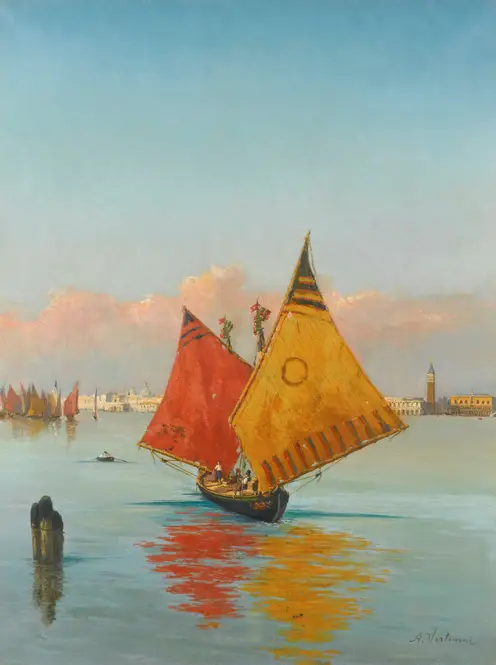Claude Monet’s ‘Sunrise (Marine)’ captures the fleeting beauty of dawn over water with loose, expressive brushstrokes that dissolve the boundaries between sea and sky. The hazy glow of the rising sun bleeds into the rippling waves, creating a dreamlike atmosphere where light itself becomes the subject. Painted in 1873, this early work hints at Monet’s growing fascination with atmospheric effects, foreshadowing his later obsession with capturing transient moments of light. Flecks of orange and pink dance across the surface, suggesting reflections on moving water rather than defining solid forms.
What makes this marine scene particularly intriguing is how Monet resists clarity – the distant sails blur into the mist, while the foreground shimmers with broken color. There’s a quiet tension between the solidity of the boats and the dissolving world around them, as if the artist is questioning what we truly see at daybreak. Unlike traditional seascapes that aim for precision, this painting celebrates perception’s imperfections, inviting viewers to experience dawn’s ambiguity rather than simply observe it.


-full.webp)
-full.webp)

-full.webp)
-full.webp)

-full.webp)
-full.webp)
%20(1873)-full.webp)